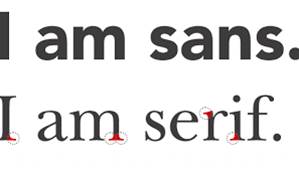Advertising CSP 1: OMO print advert
The first close-study product for Advertising and Marketing is the 1955 advert for OMO washing powder that appeared in Woman's Own magazine.
This product provides an excellent opportunity to analyse the changing representation of women in advertising over the last 60 years.
Sample questions for Advertising and Marketing
In your Media exams, you are likely to get questions similar to these:
- Why do advertisers use stereotypes? [6 marks]
- Explain how advertisements reflect the historical context in which they were created. [12 marks]
OMO advert CSP (1955)
OMO was a popular washing powder brand in the 1950s. This advert was from 1955 and needs to be studied both in terms of historical context and how it would be received today.
In 1955, British society was still adjusting after World War Two in which women took on many traditionally male jobs with men off fighting. This led to advertising in the 1950s often trying to reinforce traditional female stereotypes of housewives and mothers in order to protect male power both at work and at home.
Annotations
In the lesson, you'll have a chance to annotate your own copy of the OMO advert and make notes of the key conventions and what they communicate to the audience.
Here are some of the questions we discussed when we annotated our copy of the advert in class:
OMO advert: blog tasks
Create a blogpost called 'OMO advert CSP blog tasks' and work through the following tasks:
1) What year was the advert produced?
1955
2) How were women represented in most adverts in the 1950s? Add as much detail to this answer as you can as these are the social, cultural and historical contexts we will need to write about in the exam.
In the 1950s, gender standards were drastically different as women were expected to assume the role of housewives and carers while men were the ones going out to work in their jobs to be the breadwinners of the family. As housewives women were expected to cook, clean and take care of the children, which meant cleaning products were often aimed towards women. This is demonstrated by the OMO product which caters to the expectations set by society for female audiences.
3) How does the heading message ('OMO makes whites bright') and the style of the text promote the product?
The text is quite bold and becomes the focus of attention between the white background and the large black lettering.
4) Analyse the mise-en-scene in the advert (CLAMPS): how is costume, make-up and placement of the model used to suggest women's role in society?
The woman is hanging up laundry and wearing makeup, with clothes hanging off of her shoulder, her attention is focused on the viewer with a shocked expression, communicating a sense that she's surprised the product's worked so well. This suggests she is a housewife as she's more focused on cleaning and looking presentable for the male gaze.
5) Why is a picture of the product added to the bottom right of the advert?
5) Why is a picture of the product added to the bottom right of the advert?
The product is pictured so that the consumer knows what to buy, as the bright colours also hone their attention.
6) What are the connotations of the chosen colours in this advert - red, white and blue?
6) What are the connotations of the chosen colours in this advert - red, white and blue?
Red, White and Blue are associated often with cleanliness and effectiveness, as they are colours often present in products such as toothpaste, they connotate that the product works quite well.
7) How does the anchorage text use persuasive language to encourage the audience to buy the product? Give examples. "This'll shake you mother!" Implies that the product is so good it'll shock you, using hyperboles to persuade the cosnumer.
8) What representation of women can be found in this OMO advert?
Make specific reference to the advert and discuss stereotypes. "This'll shake you mother!" only references one female role and that is mothers, solidifying the idea that the advert is based with societal expectations of women as mothers are the ones expected to wash the laundry at home.
9) What is the preferred reading for this advert - what did the producers of the advert want the audience to think in 1955? That the product is so effective it'll make already white clothing even Whiter, proving it as something vigorously efficient.
10) What is the oppositional reading for this advert - how might a modern audience respond to this text and the representation of women here?
Women are expected to be mothers and to take over the duty of childrearing and cleaning whereas men are the ones who are free of household responsibilities.



Comments
Post a Comment